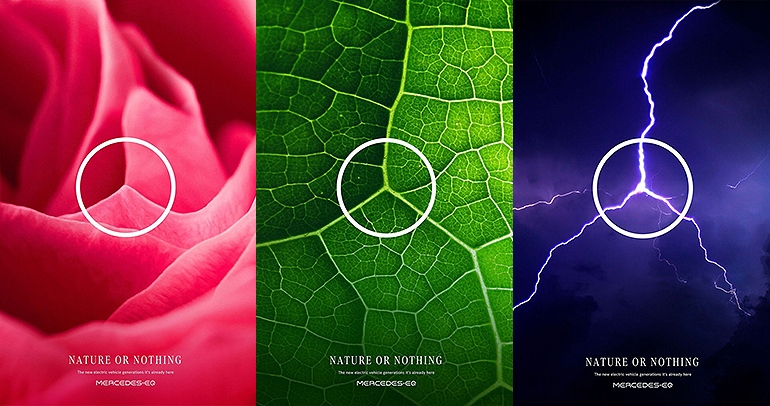
Mercedes-Benz got into hot water this year when its Mexican agency, Leo Burnett, released a “Nature or Nothing” advertising campaign that riffed on Mercedes-Benz’s iconic logo to coincide with Earth Day and promote the Mercedes-EQ line of electric vehicles (EVs). Despite being released in Mexico, the ads were in English and quickly went global as critics decried the campaign for greenwashing.

To be clear, at Escalent, we believe greenwashing—as well as all deceptive forms of advertising—is wrong. Dishonesty destroys trust, which is hard to earn in the first place and even harder to regain once broken, be it among people or with brands. However, this is not a blog about greenwashing; rather, it’s about a more fundamental error that Leo Burnett committed by anchoring its advertising message on the environmental benefits of EVs in the first place.
After three years and more than 50,000 consumer interviews in the US and Europe, our EVForwardTM study of future EV buyers concludes that environmental messaging does not move the needle on EV sales or brand perceptions. As part of this research program, we identified twelve distinct future EV buyer personas between the US and Europe, and there is not one consumer segment for which environmental messaging increases EV purchase consideration. Put more simply: consumers are either concerned about the environment and convinced that EVs help address those concerns, or environmentalism is simply not part of consumers’ decision-making process in purchasing a vehicle.
As a concrete example, let’s examine the six segments of future EV buyers we identified in the US.

The Young Enthusiast segment over-indexes on likelihood to buy a luxury midsized or large car or SUV for their next vehicle. In other words, this segment is the target market for Mercedes-Benz and its EQ vehicles. However, environmental sustainability isn’t important to Young Enthusiasts in their choice of vehicles, and they are significantly less likely to expect an EV to provide environmental benefits. These consumers just don’t care about the environmental benefits of EVs, so a campaign like Leo Burnett’s Nature or Nothing will fall on deaf ears.
What does resonate with future Young Enthusiast EV buyers?
They are much more in tune with exterior styling and in-vehicle technology than the average new-car buyer. They also expect EVs to deliver technological leadership and a unique style that helps Young Enthusiasts stand out among their peers. These buyers are looking for a vehicle that makes a positive statement about themselves to others and provides a “cool” factor—so brands and marketers who want to inspire these consumers to purchase EVs need to focus on those benefits.
With that said, it is not just a matter of saying the right things to consumers. Successful brands deliver products and services that fill gaps, solve problems or simply delight, ensuring all messaging aligns with what the brands truly have to offer. It is only by doing this that brands can build and sustain consumer trust, which leads to brand loyalty. It takes a lot of hard work to truly understand and effectively communicate with consumers about the things that are most important to them—but this leads to a more honest, authentic consumer-brand relationship.
Escalent has developed comprehensive profiles of each of the EVForward new-car buyer personas—including media consumption, hobbies and social media use—which can be used to develop effective ad campaigns that tap into the real needs and expectations of future EV buyers to move them to action. And we’ve gone beyond that to allow marketers and advertisers to effectively reach the buyer personas most likely to purchase an EV as their next vehicle (which include Young Enthusiasts) through brand audiences, with distribution to more than 400 partners including Adobe, Pandora, Outbrain and major social media platforms.
If you’re interested in learning more about EVForward, our buyer personas or our brand audiences, please reach out to me by clicking the button below.









